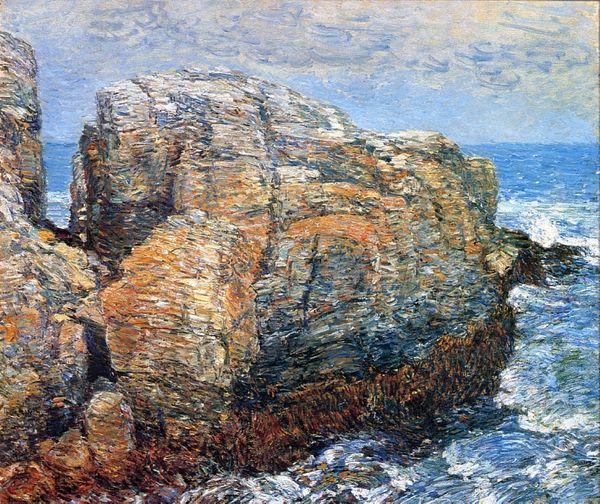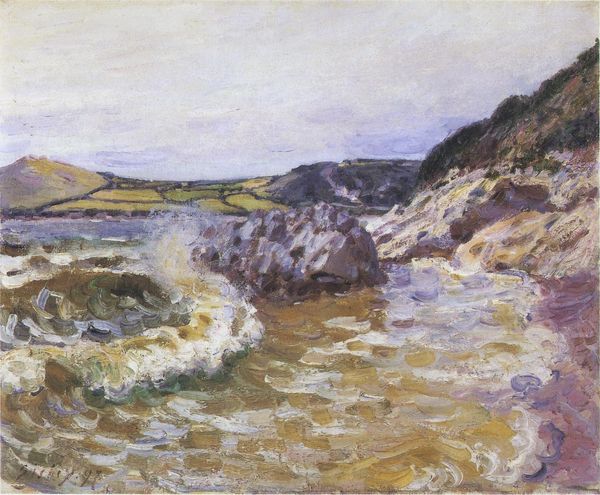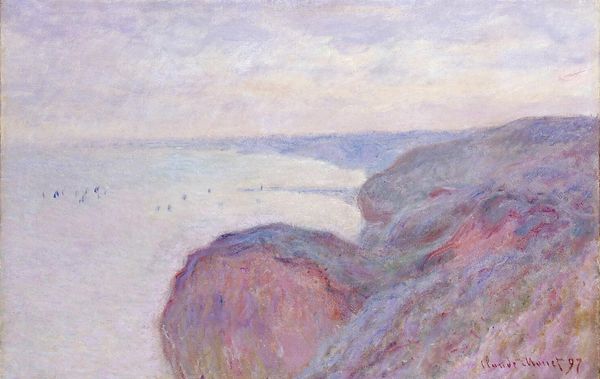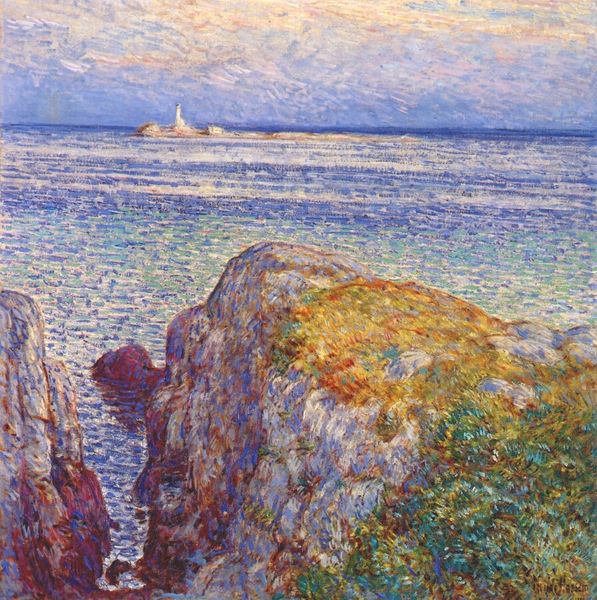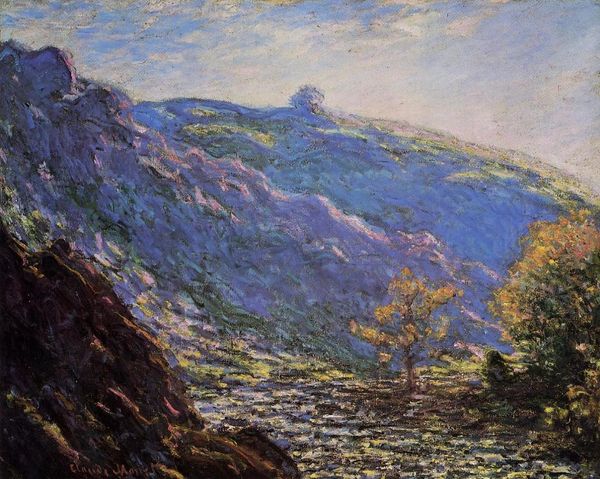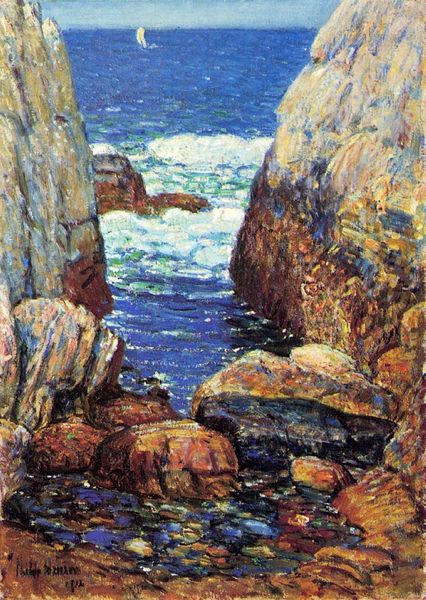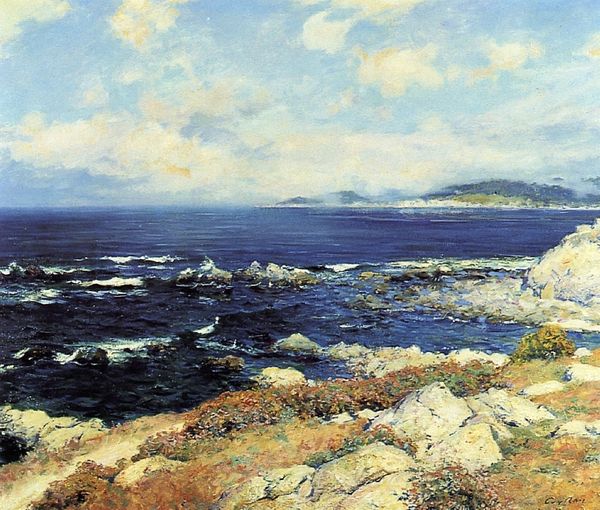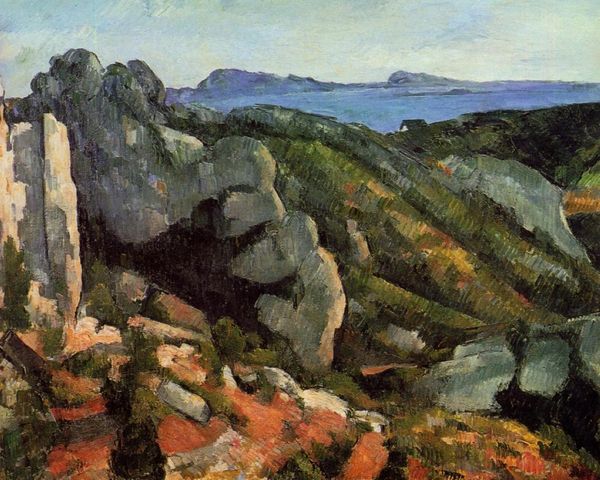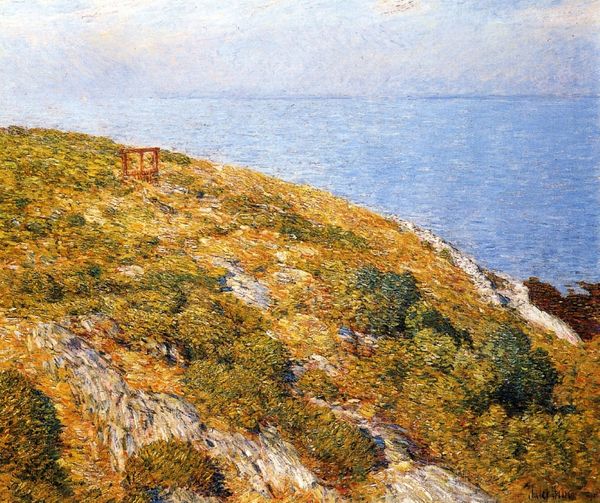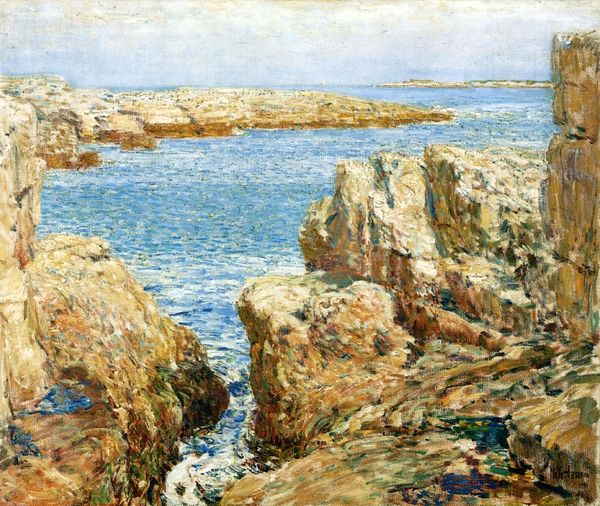
Copyright: Public domain
Editor: Here we have Monet's "The Gulf Juan at Antibes" from 1888. It's an oil painting that just feels… hazy. Everything blends together in soft blues and browns. What do you see in this piece? Curator: Well, beyond the surface beauty, I see a cultural memory embedded in this landscape. The Mediterranean has always been a crossroads, a meeting point for diverse cultures. The colors themselves—the blues, the browns— speak to both the serenity of the sea and the ruggedness of the coastline, resonating with a timeless feeling, don't you think? It almost evokes the myths from this location. Editor: That’s interesting! I was just caught up in the colors. Myths, like what? Curator: Think of the Greek and Roman myths connected to the Mediterranean. Sea nymphs, epic voyages... Do you think Monet consciously connected with those stories, or was he simply capturing the enduring essence of this landscape, echoing in the subconscious? Editor: Maybe both? The brushstrokes definitely capture a fleeting moment, but those timeless themes must have been in the air, influencing his vision. Curator: Precisely! It’s like the landscape becomes a stage where the past and present converge. And perhaps those rocky crags represent obstacles that we overcome over and over, as time flows into itself. Editor: It's fascinating to consider how a landscape can carry so much meaning, beyond just what's visible. I learned something new today! Curator: Indeed! It’s a reminder that images are never just what they seem. There are symbols from art and history that add additional context. It is how images speak to us, both consciously and unconsciously, shaping our understanding of the world.
Comments
No comments
Be the first to comment and join the conversation on the ultimate creative platform.

